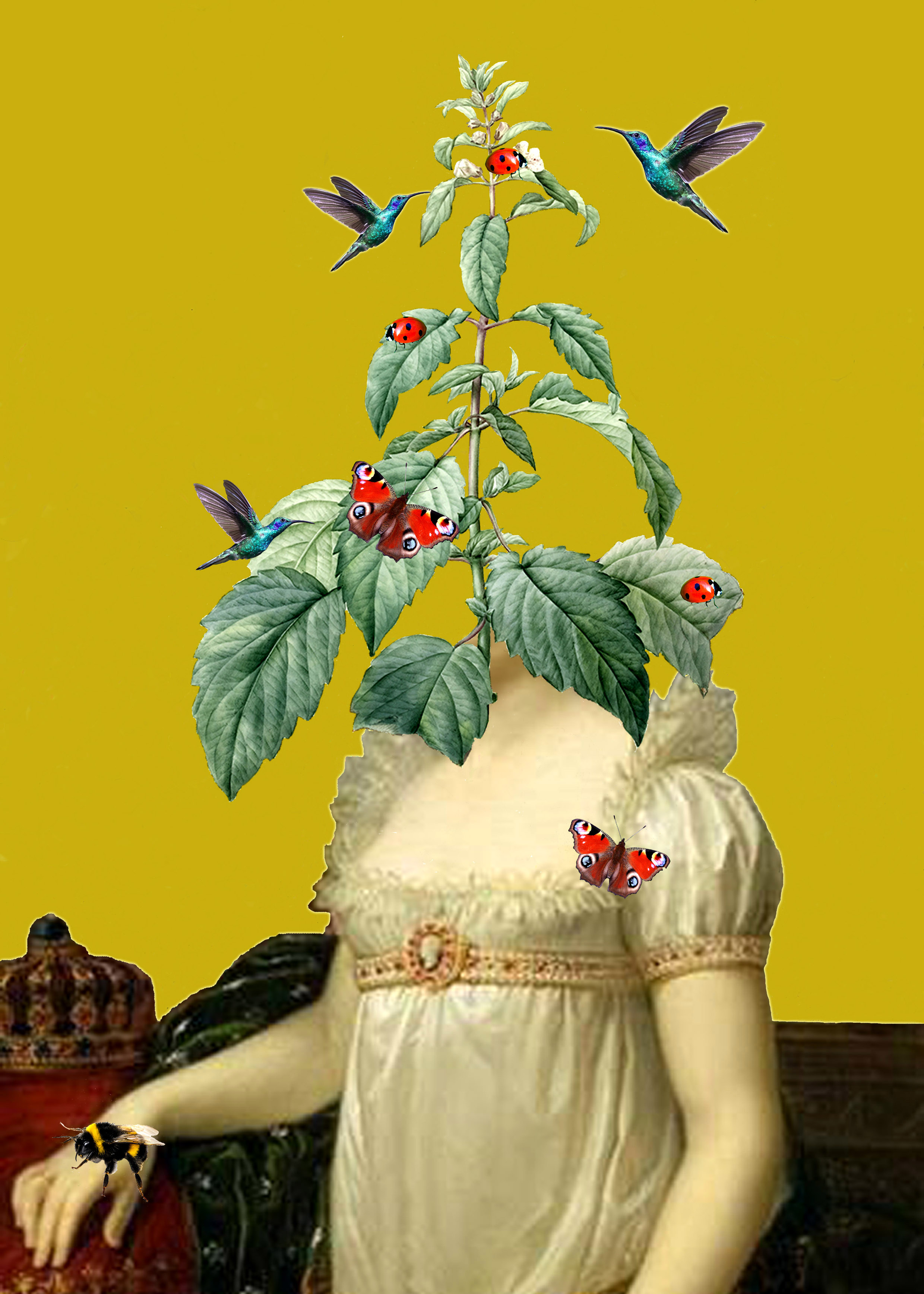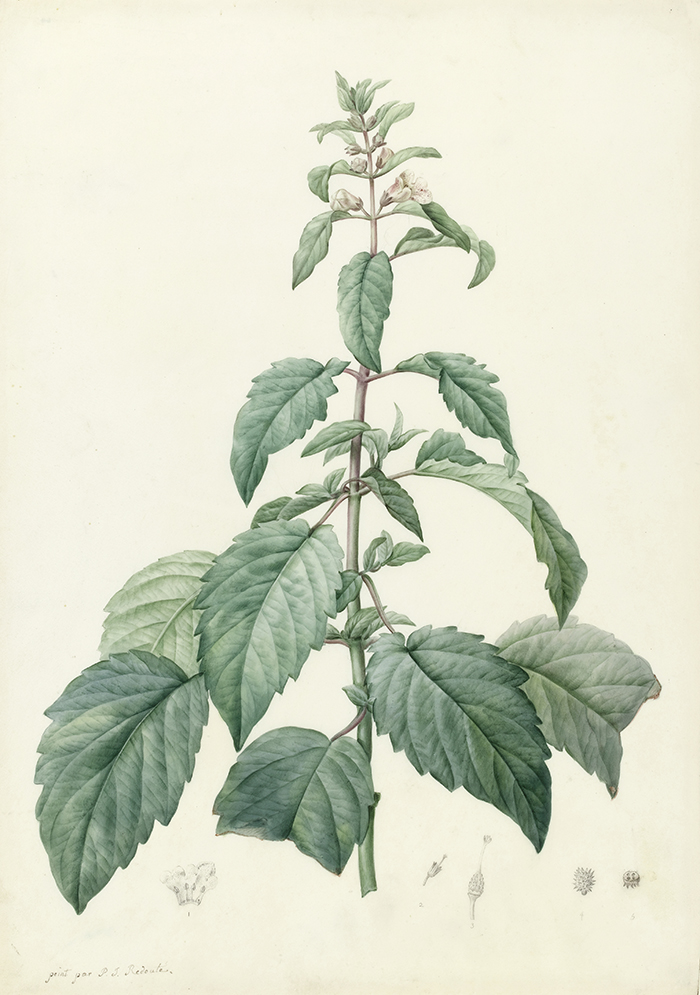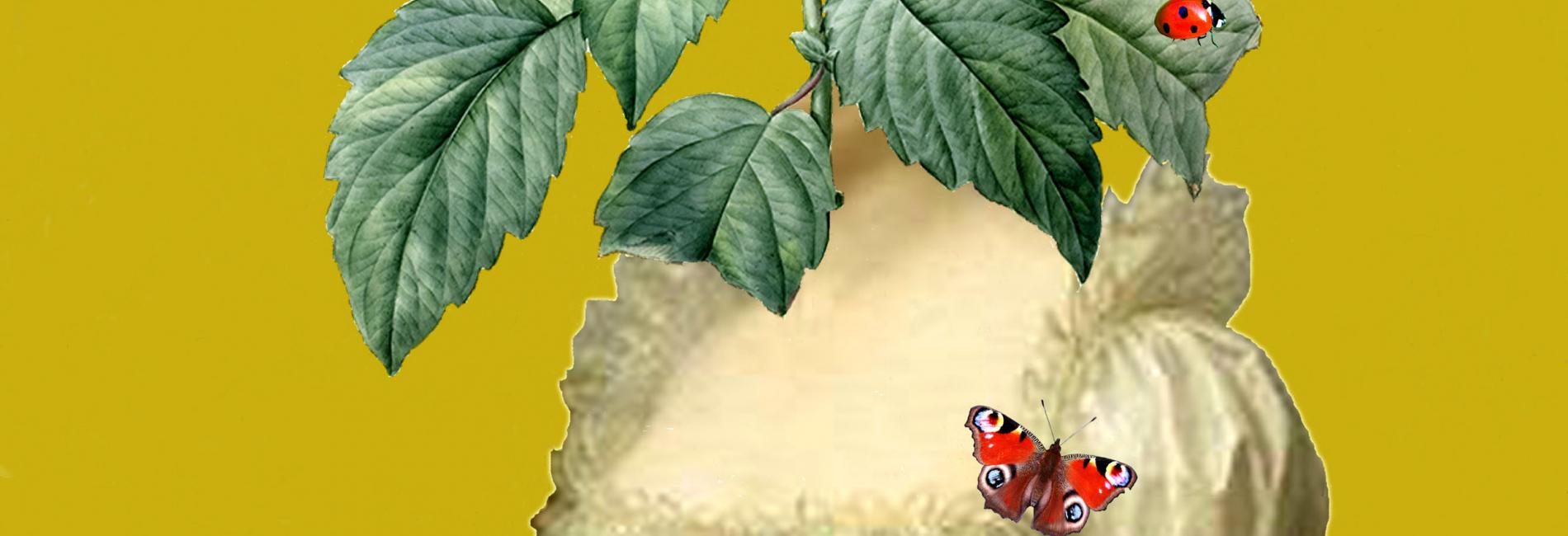What can the botany-loving Empress Joséphine, wife of Napoleon Bonaparte, tell us about the relationship between science and empire?
Helen Grundy's artwork Josephine Hybrid is inspired by a botanical watercolour in the Fitzwilliam Museum by Pierre-Joseph Redouté. The watercolour depicts the plant josephinia imperatricis, named after Empress Joséphine. In this collage, Helen splices together josephinia imperatricis with a portrait of its namesake.
Josephine Hybrid
Digital collage

Helen writes, "I was drawn to the object as it was such a beautiful artwork in its own right, and I loved the accompanying information as I had no idea how much she loved plants. It inspired me to create a new piece of work."
Museum Remix Guest Curator Lucian Stephenson reflects, "A completely beautiful, visually balanced, tightly designed piece, smashing together Empress Joséphine and her plant."
The object that inspired the artwork: Josephinia imperatricis by Pierre-Joseph Redoubté

This plant isn't a humble nettle, but josephinia imperatricis, named after Empress Joséphine, the wife of Napoleon Bonaparte.
Joséphine (1763-1843) filled the Malmaison Palace in Paris with exotic plants from the lands her husband Napoleon had conquered - and beyond. Josephinia imperatricis comes from Australia, then known to Europeans as New Holland. Specimens were collected by a French scientific expedition led by Captain Hamelin, which returned to France in 1803 with a huge collection of plants and seeds.
There are lots of gaps in our knowledge about this story. Who helped Hamelin and his expedition amass such a wealth of natural resources? Did they seek the expertise and guidance of local people whose stories and contributions to the discovery of new plants have been missed out? And what about Joséphine herself? Should she be recognised for furthering botanical knowledge, or was she simply satisfying her own desires and displaying her wealth and power through her global collection of plants?
Helen Grundy's Josephine Hybrid sees the Empress spliced together with her plant, but also in a way hiding behind it, inviting us to look harder at the beautiful watercolour to the human stories beyond.
This artwork is part of the Museum Remix: Unheard project, and is featured in the Museum Remix: Woven Histories digital exhibition.



